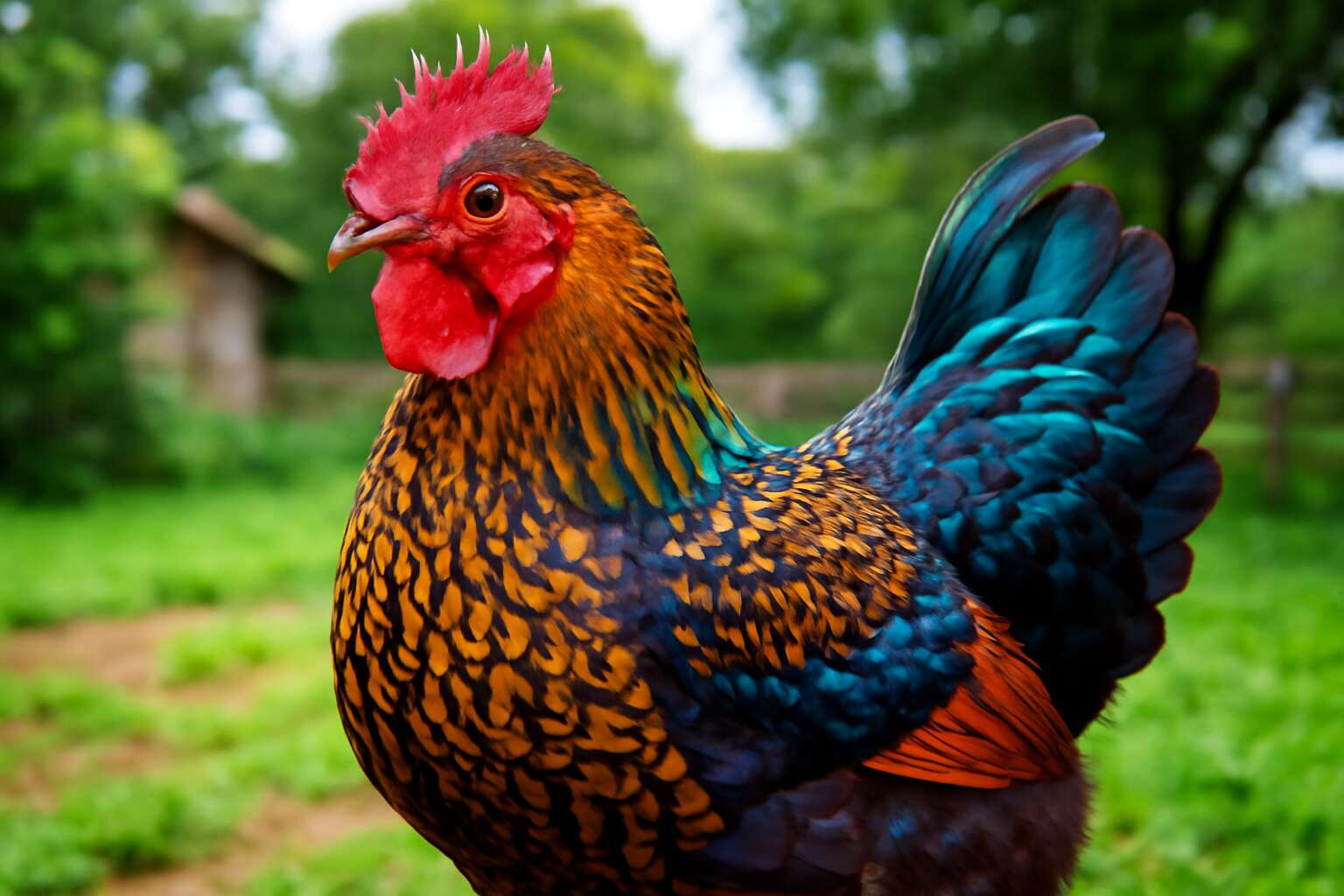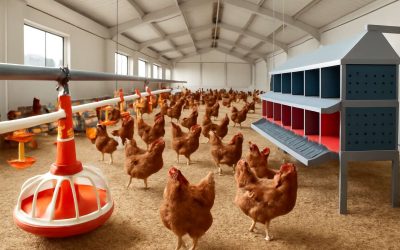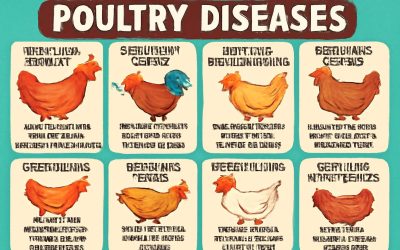Popular Rare Poultry Breeds for Enthusiasts
Silkie Chickens – History, Characteristics, and Care Tips
In the shadowed corners of poultry rare breeds, Silkie chickens emerge as ethereal specters from a bygone era—cloaked in mystique and softness. Their history whispers of ancient China, where these enigmatic birds were revered not merely for their appearance but for their almost otherworldly qualities. With plumes like spun silk and a temperament that borders on the docile, Silkies possess an allure that transcends mere aesthetics.
Striking in their appearance, these birds boast a unique set of characteristics—feathered legs, a crest reminiscent of a royal crown, and skin that can appear blue or black beneath their fluffy exterior. Their care demands a delicate touch; they thrive in sheltered environments, immune to the harsh South African climate, yet require special attention to their diet and housing. Enthusiasts who seek to preserve poultry rare breeds find Silkies to be both a charming challenge and a living piece of history.
Aseel Chickens – Origin, Unique Traits, and Breeding Advice
Among the pantheon of poultry rare breeds, Aeel chickens stand out for their resilience, striking appearance, and historical significance. Originating from the arid regions of India, these birds have captivated enthusiasts worldwide due to their unmatched fighting spirit and distinct physical traits. Their history is intertwined with centuries of tradition, reflecting a martial legacy that continues to influence modern breeding practices.
Aeel chickens are characterized by their robust build, powerful legs, and a comb that often resembles a crest of feathers. Their plumage varies but typically features a blend of earthy tones that mirror their rugged origins. What truly sets them apart is their fighting prowess, making them a prized choice for breeders interested in rare poultry breeds with a combat heritage.
- Hardy and adaptable to diverse climates
- Distinctive appearance with muscular frame
- Rich cultural significance as a traditional fighting breed
Breeding Aeel chickens demands a profound understanding of their unique temperament and genetic traits. They thrive in environments that challenge their instincts, which is why selection should focus on maintaining their vigor and combat qualities without compromising health. Enthusiasts often seek a delicate balance—preserving their historic lineage while cultivating desirable traits that ensure their survival amid modern poultry farming. Their resilience and striking physicality make them a compelling addition to any collection of rare poultry breeds in South Africa, where a passion for heritage poultry continues to grow.
Orpingtons – Distinct Features and Rarity Factors
Among the captivating world of poultry rare breeds, Orpingtons hold a special place in the hearts of enthusiasts. Known for their gentle temperament and striking appearance, these birds are a true testament to selective breeding’s artistry. With a history rooted in 19th-century England, Orpingtons have become a symbol of resilience and versatility, making them a prized addition to any rare poultry breeds collection.
Their lush, fluffy feathers come in a variety of colors, including buff, black, and blue, each adding a touch of elegance to the coop. What sets Orpingtons apart is their remarkable adaptability—they thrive in diverse climates, from the cool mornings of South Africa to warmer, more humid environments. This hardy nature makes them a favorite among those seeking low-maintenance poultry rare breeds that do not compromise on beauty.
- Distinguished by their rounded bodies and calm demeanor
- Possessing excellent egg-laying capabilities for their size
- Known for their meat quality, making them a dual-purpose breed
For passionate breeders, the rarity of Orpingtons adds an extra layer of appeal—each bird embodies a blend of history, resilience, and aesthetic charm. Their status as one of the poultry rare breeds that can adapt and flourish in South Africa makes them a compelling choice for those dedicated to preserving heritage poultry. Truly, these birds symbolize the enduring spirit of rural life and the timeless beauty of traditional farming.
Cream Legbar – Autosexing Traits and Preservation Efforts
Within the enchanting tapestry of poultry rare breeds, the Cream Legbar emerges as a beacon of autosexing innovation and preservation dedication. These striking birds are not merely a visual delight but also a marvel of genetic science, revealing their gender with remarkable certainty at hatch. Such traits make them a coveted choice for breeders eager to uphold the integrity of poultry rare breeds while streamlining their flock management.
The Cream Legbar’s delicate, laced plumage dances in the sunlight, a testament to meticulous breeding aimed at vibrant aesthetics and functional excellence. Their history is woven with the threads of British ingenuity, yet their adaptability makes them increasingly popular in diverse climates—South Africa included—where they flourish with minimal fuss. Enthusiasts who cherish the preservation of heritage poultry find in Cream Legbars a compelling muse, blending beauty with practicality in the realm of rare poultry breeds.
- Genetic marvels that embody the essence of autosexing traits
- Vigorous layers, offering a steady supply of eggs
- Elegant appearance, with striking crests and patterned feathers
Efforts to safeguard their lineage are ongoing, ensuring that these birds continue to inspire future generations of poultry lovers. The Cream Legbar stands as a testament to the resilience and ingenuity that define poultry rare breeds, offering a rare glimpse into the harmonious blend of science and tradition in avian heritage preservation.
Distinctive Features of Rare Poultry Breeds
Unique Plumage Patterns – Breeds with Unusual Feather Colors and Designs
Some poultry rare breeds boast a visual symphony that seems almost otherworldly. Their plumage patterns are not just beautiful—they are living art, each feather a brushstroke of nature’s most daring palette. These breeds often feature unusual feather colors and designs that set them apart from the ordinary, captivating poultry enthusiasts and avian connoisseurs alike. In South Africa, where the avian landscape is rich and diverse, discovering breeds with mesmerizing feather patterns is like uncovering hidden treasures.
For example, certain rare breeds display feathers with iridescent hues that shimmer under sunlight, creating a supernatural glow. Others have intricate, lacy designs or bold contrasting colors that resemble abstract paintings in motion. The rarity of these poultry breeds is amplified by their unique plumage, making them prized collectibles and conversation starters. Their feather patterns are often so striking that they seem almost too perfect—like they belong to a mystical realm, not just a farmyard.
Incorporating these distinctive features into your flock isn’t just about aesthetics—these rare poultry breeds also symbolize genetic diversity and resilience. Their unusual feather colors and designs serve as a reminder that nature’s creativity knows no bounds. With each glance at their spectacular plumage, it’s easy to believe some breeds are truly touched by the supernatural, standing as living testament to the marvels of poultry conservation efforts.
Specialized Breeding Traits – Autosexing and Other Distinctive Traits
Among the most captivating facets of poultry rare breeds are their specialized breeding traits, which elevate them from mere farmyard inhabitants to living marvels of genetics and artistry. These breeds often possess unique features that serve both aesthetic and practical purposes, creating a symphony of diversity within the avian world. One such trait is autosexing, a genetic marvel that allows breeders to determine the sex of chicks immediately at hatch—an invaluable advantage in managing rare poultry breeds efficiently and with precision.
Autosexing breeds are distinguished by their distinctive feather coloration or patterning that varies between males and females. This natural differentiation not only simplifies breeding strategies but also adds a layer of intrigue to poultry husbandry. Other notable traits include enhanced resilience, unusual comb structures, or feathering that adapts to specific environmental conditions—traits that bolster their status as resilient, rare poultry breeds in South Africa’s diverse climate.
In the broader tapestry of poultry rare breeds, these specialized traits highlight the importance of preserving genetic diversity. They are more than mere ornamental features; they embody the ingenuity of natural evolution and human cultivation, making each breed a rare treasure worth safeguarding. The allure of these breeds lies not only in their striking appearance but in the intricate genetic choreography that makes them truly extraordinary in the world of poultry.
Size and Growth Patterns – Miniature and Jumbo Variations
Within the enchanting realm of poultry rare breeds, size and growth patterns present a fascinating spectrum that captures both the eye and the imagination. Some breeds are delicately miniature, their petite frames evoking a sense of fragile elegance, while others are robust, commanding attention with their jumbo proportions. These variations in stature not only influence their aesthetic appeal but also shape their roles on diverse farms and homesteads across South Africa.
Miniature poultry rare breeds, often prized for their charming demeanor and space-efficient nature, make delightful additions to small backyards. Conversely, jumbo variations embody a grandeur that echoes the legacy of traditional poultry farming—standing tall as symbols of strength and productivity. The contrasting sizes highlight the astonishing diversity within poultry rare breeds, each meticulously shaped by natural adaptation and selective breeding.
- Size influences growth patterns, with some breeds maturing rapidly, while others follow a slower, more deliberate development trajectory—each a testament to their unique genetic blueprint.
Whether tiny or colossal, these distinctive features of size and growth underscore the rich tapestry of poultry rare breeds, emphasizing their irreplaceable role in conserving genetic diversity and infusing farms with a touch of extraordinary charm. Their varied dimensions serve as a vivid reminder that within each feathered form lies a story of evolution, resilience, and artistic breeding mastery in South Africa’s diverse climate.
Conservation and Preservation of Rare Poultry Breeds
Breeding Programs and Associations – Organizations Supporting Rare Poultry
Preserving the legacy of poultry rare breeds is a delicate dance between passion and preservation. Around the world, dedicated breeding programs serve as guardians of these unique genetic treasures, ensuring that their remarkable traits are not lost to time. In South Africa, several organizations passionately support rare poultry breeds, fostering a vibrant community committed to conservation and education. These associations often coordinate breeding efforts, host exhibitions, and promote awareness about the importance of maintaining genetic diversity within poultry rare breeds.
By participating in these programs, breeders help safeguard rare breeds from the threat of extinction. They meticulously select for traits that highlight each breed’s distinctiveness—be it the flamboyant plumage or resilient hardiness. Collaborative efforts often include:
- Establishing breeding guidelines that prioritize genetic health
- Developing breeding stock exchanges to increase diversity
- Raising public awareness through educational outreach
Supporting these initiatives is essential to ensure that future generations can marvel at the splendor and resilience of poultry rare breeds, keeping this captivating world vibrant and alive in South Africa and beyond.
Challenges in Conservation – Maintaining Genetic Diversity and Rarity
The preservation of poultry rare breeds faces a formidable challenge: maintaining their genetic diversity amidst a rapidly changing world. As modern agriculture favors high-yield breeds, the unique traits of these ancient and resilient poultry varieties risk fading into obscurity. Without deliberate intervention, the rich tapestry of poultry rare breeds could become a mere whisper of history, lost to the relentless march of time.
One of the most pressing issues is genetic bottlenecking, where a limited gene pool hampers the ability of these breeds to adapt and thrive. This narrowing of genetic diversity makes poultry rare breeds more susceptible to diseases and environmental changes, threatening their survival. To combat this, conservation efforts often focus on creating genetic repositories and carefully managed breeding programs that prioritize health and sustainability.
In South Africa, dedicated breeders and organizations are acutely aware of the stakes. They employ strategies such as
- establishing breeding guidelines
- developing stock exchanges
- promoting public awareness
to ensure these rare breeds flourish for generations to come. Yet, the road is fraught with obstacles, as the rarity of some breeds makes it difficult to find compatible mates or maintain viable populations. Overcoming these hurdles requires resilience, passion, and a shared commitment to safeguarding the legacy of poultry rare breeds.
How to Get Involved – Tips for Breeders and Enthusiasts
Conservation and preservation of poultry rare breeds is a vital endeavor to safeguard the genetic heritage of our agricultural history. Enthusiasts and breeders play a crucial role in maintaining these unique breeds, ensuring they continue to thrive amidst modern farming trends that favor high-yield poultry. Active participation in breeding programs and awareness campaigns can significantly impact the survival of these resilient varieties.
Getting involved can be as simple as joining local poultry associations or participating in breeding exchanges. These platforms facilitate the sharing of genetic material and provide valuable guidance on best practices for preserving rare breeds. By engaging in responsible breeding, enthusiasts help prevent genetic bottlenecking and promote diversity within poultry rare breeds.
For those passionate about conservation, supporting or establishing breeding guidelines and collaborating with conservation organizations can make a tangible difference. The more individuals who recognize the importance of preserving poultry rare breeds, the greater the chance of maintaining their legacy for future generations. Remember, every effort counts in this collective journey to protect our poultry heritage!
Care Requirements for Rare Poultry Breeds
Housing and Environment – Optimal Living Conditions
In the delicate ecosystem of poultry rare breeds, the environment is not merely a backdrop but a living canvas that sustains their fragile beauty and unique traits. These breeds, often heralded for their ornamental plumage and storied histories, require a sanctuary that mimics their ancestral origins—where safety, comfort, and natural behaviors intertwine. Proper housing must balance protection from South Africa’s fluctuating climate with ample space for foraging and dust bathing, essential activities that bolster their health and vitality.
Optimal living conditions for these extraordinary poultry rare breeds involve a meticulous blend of shelter and outdoor freedom. A well-ventilated coop, with roosting bars and nesting boxes, ensures safety during the night, while open runs encourage natural movement—vital for their well-being. The environment should be enriched with organic bedding, fresh water, and a diet tailored to their specific needs, fostering a thriving community of resilient, vibrant birds.
- Protection from harsh weather elements
- Ample space for movement and foraging
- Clean, dry bedding to prevent disease
- Secure fencing to deter predators
Diet and Nutrition – Feeding Tips for Healthy Growth
Feeding poultry rare breeds isn’t just about filling a bowl; it’s about nurturing a living legacy. These extraordinary birds often possess delicate health needs, demanding a diet that supports their unique physiology and preserves their vibrant plumage. Proper nutrition is the cornerstone of healthy growth, especially in environments where their rarity makes them more vulnerable to nutritional deficiencies.
For optimal health, provide a balanced diet rich in high-quality protein, essential vitamins, and minerals. Poultry rare breeds thrive on a diet that mimics their natural foraging habits—think grains, seeds, and organic greens. Incorporating a premium poultry feed formulated specifically for their breed type can dramatically improve their vitality. Fresh, clean water must always be within reach, encouraging hydration and digestion.
To ensure these rare breeds reach their full potential, consider supplementing their diet with calcium for strong eggshells or omega fatty acids for superior plumage condition. Remember, a varied diet isn’t just beneficial; it’s vital. By nourishing these birds thoughtfully, you’re safeguarding their future and ensuring their stunning appearance and resilient nature endure for generations to come.
Health and Disease Prevention – Common Issues and How to Prevent Them
Protecting the health of poultry rare breeds requires vigilant care and an understanding that their delicate constitution makes them particularly susceptible to certain ailments. While their unique beauty is undeniable, these breeds often face common issues such as respiratory infections, parasitic infestations, and nutritional deficiencies. Prevention begins with a clean, well-ventilated environment that reduces moisture and airborne pathogens, crucial for maintaining their vitality.
Regular health checks and early intervention can prevent minor symptoms from escalating into severe conditions. Incorporating natural remedies and maintaining a strict biosecurity protocol safeguards these birds from disease outbreaks. For instance, ensuring proper sanitation and quarantine procedures for new arrivals is essential to prevent the spread of contagious ailments. To streamline health management, consider a routine vaccination schedule tailored to the specific needs of poultry rare breeds.
Monitoring for signs of weakness or lethargy, along with a balanced diet rich in essential nutrients, supports their immune system. Remember, fostering resilience in these extraordinary birds is a testament to dedicated conservation efforts. Their rarity makes every effort count—each healthy, thriving poultry rare breed is a step toward preserving genetic diversity for future generations.
Benefits of Raising Rare Poultry Breeds
Unique Aesthetic Appeal – Standout Visual Features
Raising poultry rare breeds offers a striking visual appeal that sets your flock apart. These breeds are prized for their unique plumage, unusual color patterns, and distinctive features that catch the eye. Whether it’s the shimmering iridescence of a Silver Laced Wyandotte or the intricate feather designs of a Polish chicken, these breeds are true conversation starters. Their rarity adds an element of exclusivity that appeals to dedicated poultry enthusiasts and collectors alike.
Many poultry rare breeds also boast features that make them stand out in a crowd, such as crests, wattles, or unusual feather arrangements. These captivating aesthetics are not only beautiful but can also serve functional purposes, such as better insulation or camouflage in natural habitats. For those seeking to diversify their flock, these breeds offer an unmatched combination of beauty and rarity that elevates any poultry collection.
- Distinctive plumage patterns
- Uncommon color combinations
- Unique physical traits like crests or wattles
Genetic Diversity Contribution – Preserving Heritage and Biodiversity
Raising poultry rare breeds is more than a pursuit of aesthetic pleasure; it is an act of preservation that resonates deeply with our collective responsibility to biodiversity. These breeds embody genetic resilience—an essential safeguard against the vulnerabilities of monoculture in poultry farming. Each rare breed adds a vital thread to the intricate tapestry of genetic diversity, ensuring that adaptability and resilience remain embedded within poultry populations.
In South Africa, where climate variability challenges traditional farming, the contribution of poultry rare breeds becomes even more significant. They carry unique genetic traits that can withstand local environmental stresses, making them invaluable for sustainable farming practices. Protecting these breeds helps maintain a dynamic gene pool, fostering resilience and innovation in poultry breeding.
Furthermore, supporting conservation efforts for poultry rare breeds is a moral commitment to heritage preservation. It is an acknowledgment that diversity is not merely aesthetic but essential for the long-term survival of our poultry populations. As stewards of this genetic heritage, breeders play a crucial role in safeguarding the future of poultry, ensuring that these rare breeds continue to thrive amidst a rapidly changing world.
Educational and Hobbyist Value – Learning Opportunities and Enjoyment
Raising poultry rare breeds offers a treasure trove of educational and hobbyist opportunities that go beyond mere bird-keeping. For enthusiasts, it’s a chance to delve into the fascinating world of heritage poultry, each breed telling a story of history, adaptation, and resilience. The process of learning about these breeds—whether it’s understanding their unique behavioral traits or mastering their specific care requirements—can be both intellectually stimulating and deeply rewarding.
Engaging with poultry rare breeds also fosters a sense of community among breeders and hobbyists. Many organizations and clubs host workshops, exchange programs, and breed shows that celebrate these exceptional birds. Such interactions not only enhance knowledge but also cultivate a shared passion for conservation and biodiversity. For those eager to explore further, participating in breeding programs can be a delightful blend of science and art, offering tangible connections to genetic heritage and sustainability.
Whether you’re captivated by the vivid plumage of a Cream Legbar or intrigued by the resilience of hardy South African breeds, raising poultry rare breeds enriches the hobby with diversity and depth. For the curious mind, these breeds are a living classroom—each feather, each gene, a chapter in the ongoing story of biodiversity conservation. Embrace the challenge, and you’ll find that the joy of poultry rare breeds extends far beyond the coop, into the realms of education, culture, and personal fulfillment.




0 Comments